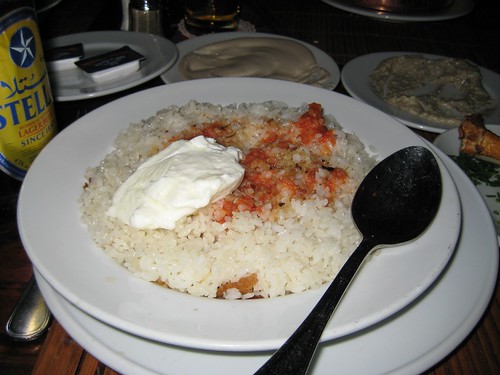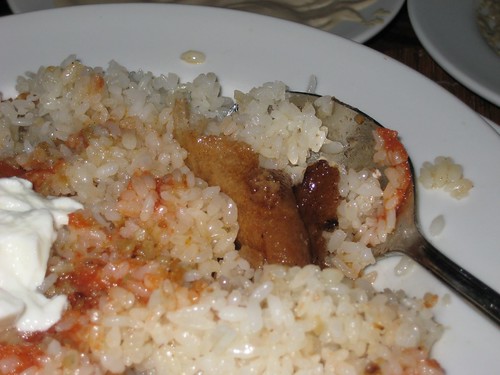Least we can do in time like this,is to have a momet of silence to pay our respect
And due to the event,we will talk a little about it..
Not about the event...opening TV would be enough,but about the facts lying behinde it
Misery of a whole nation !
 1517 AD
1517 AD : The Ottoman Turks of Asia Minor defeated the Mamelukes, with few interruptions, ruled Palestine until the winter of 1917-18. The country was divided into several districts (sanjaks), such as that of Jerusalem. The administration of the districts was placed largely in the hands of Arab Palestinians, who were descendants of the Canaanites. The Christian and Jewish communities, however, were allowed a large measure of autonomy. Palestine shared in the glory of the Ottoman Empire during the 16th century, but declined again when the empire began to decline in the 17th century.
1831-1840 AD : Muhammad Ali, the modernizing viceroy of Egypt, expanded his rule to Palestine . His policies modified the feudal order, increased agriculture, and improved education.
1840 The Ottoman Empire reasserted its authority, instituting its own reforms .
1845 Jewish in Palestine were 12,000 increased to 85,000 by 1914. All people in Palestine were Arabic Muslims and Christians.
1897 the first Zionist Congress held Basle, Switzerland, issued the Basle programme on the colonization of Palestine.
1904 the Fourth Zionist Congress decided to establish a national home for Jews in Argentina.
1906 the Zionist congress decided the Jewish homeland should be Palestine.
1914 With the outbreak of World War I, Britain promised the independence of Arab lands under Ottoman rule, including Palestine, in return for Arab support against Turkey which had entered the war on the side of Germany.
1916 Britain and France signed the Sykes-Picot Agreement, which divided the Arab region into zones of influence. Lebanon and Syria were assigned to France, Jordan and Iraq to Britain and Palestine was to be internationalized.
1917 The British government issued the Balfour Declaration on November 2, in the form of a letter to a British Zionist leader from the foreign secretary Arthur J. Balfour prmissing him the establishment of a national home for the Jewish people in Palestine.
1917-1918 Aided by the Arabs, the British captured Palestine from the Ottoman Turks. The Arabs revolted against the Turks because the British had promised them, in correspondence with Shareef Husein ibn Ali of Mecca, the independence of their countries after the war. Britain, however, also made other, conflicting commitments in the secret Sykes-Picot agreement with France and Russia (1916), it promised to divide and rule the region with its allies. In a third agreement, the Balfour Declaration of 1917, Britain promised the Jews a Jewish "national home" in Palestine .
1918 After WW I ended, Jews began to migrate to Palestine, which was set a side as a British mandate with the approval of the League of Nations in 1922. Large-scale Jewish settlement and extensive Zionist agricultural and industrial enterprises in Palestine began during the British mandatory period, which lasted until 1948.
1919 The Palestinians convened their first National Conference and expressed their opposition to the Balfour Declaration.
1920 The San Remo Conference granted Britain a mandate over Palestine. and two years later Palestine was effectively under British administration. Sir Herbert Samuel, a declared Zionist, was sent as Britain's first High Commissioner to Palestine. 1922 The Council of the League of Nations issued a Mandate for Palestine.
1929 Large-scale attacks on Jews by Arabs rocked Jerusalem. Palestinians killed 133 Jews and suffered 116 deaths. Sparked by a dispute over use of the Western Wall of Al-Aqsa Mosque ( this site is sacred to Muslims, but Jews claimed it is the remaining of jews temple all studies shows clearly that the wall is from the Islamic ages and it is part of al-Aqsa Mosque). But the roots of the conflict lay deeper in Arab fears of the Zionist movement which aimed to make at least part of British-administered Palestine a Jewish state.
1936 The Palestinians held a six-month General Strike to protest against the confiscation of land and Jewish immigration.
1937 Peel Commission, headed by Lord Robert Peel, issued a report. Basically, the commission concluded, the mandate in Palestine was unworkable There was no hope of any cooperative national entity there that included both Arabs and Jews. The commission went on to recommend the partition of Palestine into a Jewish state, an Arab state, and a neutral sacred-site state to be administered by Britain.
1939 The British government published a White Paper restricting Jewish immigration and offering independence for Palestine within ten years. This was rejected by the Zionists, who then organized terrorist groups and launched a bloody campaign against the British and the Palestinians.
1947 Great Britain decided to leave Palestine and called on the United Nations (UN) to make recommendations. In response, the UN convened its first special session and on November 29, 1947, it adopted a plan calling for partition of Palestine into Jewish and Arab states, with Jerusalem as an international zone under UN jurisdiction.
1947 Arab protests against partition erupted in violence, with attacks on Jewish settlements in retalation to the attacks of Jews terrorist groups to Arab Towns and villages and massacres in hundred against unarmed Palestinian in there homes.
15 May 1948 British decided to leave on this day, leaders of the Yishuv decided (as they claim) to implement that part of the partition plan calling for establishment of a Jewish state. The same day, the armies of Egypt, Transjordan (now Jordan), Syria, Lebanon, and Iraq joined Palestinian and other Arab guerrillas in a full-scale war (first Arab-Israeli War). The Arabs failed to prevent establishment of a Jewish state, and the war ended with four UN-arranged armistice agreements between Israel and Egypt, Lebanon, Jordan, and Syria. The small Gaza Strip was left under Egyptian control, and the West Bank was controled by Jordan. Of the more than 800,000 Arabs who lived in Israeli-held territory before 1948, only about 170,000 remained. The rest became refugees in the surrounding Arab countries, ending the Arab majority in the Jewish state.
1956 Attckes incursions by refugee guerrilla bands and attacks by Arab military units were made, Egypt refused to permit Israeli ships to use the Suez Canal and blockaded the Straits of Tiran erupted in the second Arab-Israeli War.Great Britain and France joined the attack because of their dispute with Egypt's president Gamal Abdel Nasser, who had nationalized the Suez Canal. Seizing the Gaza Strip and the Sinai Peninsula within few days. The fighting was halted by the UN after a few days, and a UN Emergency Force (UNEF) was sent to supervise the cease-fire in the Canal zone. By the end of the year their forces withdrew from Egypt, but Israel refused to leave Gaza until early 1957.
1965 The Palestine Liberation Organization was established.
1967 Nasser's insistence in 1967 that the UNEF leave Egypt, led Israel to attack Egypt, Jordan, and Syria simultaneously on 5th of June.The war ended six days later with an Israeli victory. Israel occuiped Gaza Strip, Sinai Peninsula, Arab East Jerusalem, West Bank, Golan Heights.
After 1967 war, several guerrilla organizations within the Palestine Liberation Organization (PLO) carried out guerrillas attacks on Israeli miletary targets, with the stated objective of "redeeming Palestine.
1973 Egypt and Syria joined in a war against Israel 'sentence has been corrected by me'to regain the territories lost in 1967. The two Arab states struck unexpectedly on October 6. After crossing the suez channel the Arab forces gain a lot of advanced positions in Sinai Peninsula and Golan Heights and manage to defeat the Israeli forces for more then three weeks. Israeli forces with a massive U.S. economic and military assistance managed to stop the arab forces after a three-week struggle. The Arab oil-producing states cut off petroleum exports to the United States and other Western nations in retaliation for their aid to Israel.In an effort to encourage a peace settlement, U.S. secretary of state, Henry Kissinger, managed to work out military disengagements between Israel and Egypt in the Sinai and between Israel and Syria in the Golan Heights during 1974.
1974 The Arab Summit in Rabat recognized the PLO as the sole legitimate representative of the Palestinian people.
1982 Israel launched an invasion of Lebanon aimed at wiping out the PLO presence there. By mid-August, after intensive fighting in and around Bayrut, the PLO agreed to withdraw its guerrillas from the city. Israeli troops remained in southern Lebanon.
1987 Relations between Israel and the Palestinians entered a new phase with the intifada, a series of uprisings in the occupied territories that included demonstrations, strikes, and rock-throwing attacks on Israeli soldiers.
1988 The PNC meeting in Algiers declared the State of Palestine as outlined in the UN Partition Plan 181.
For more information:
http://www.palestinehistory.com/history/brief/brief.htm

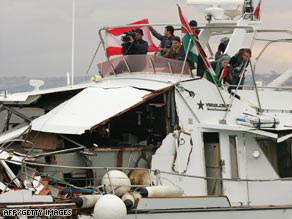




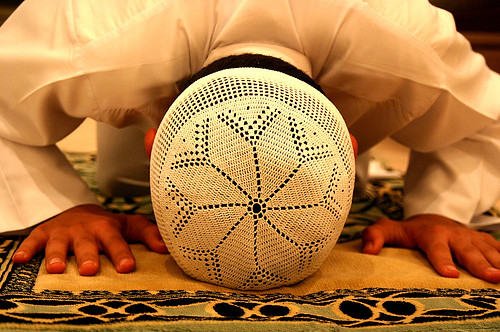




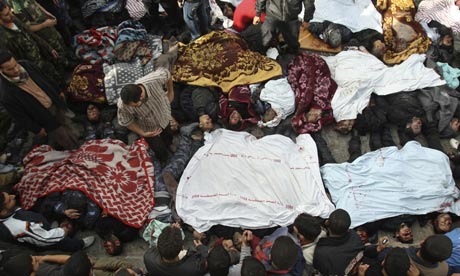




 After
After 










